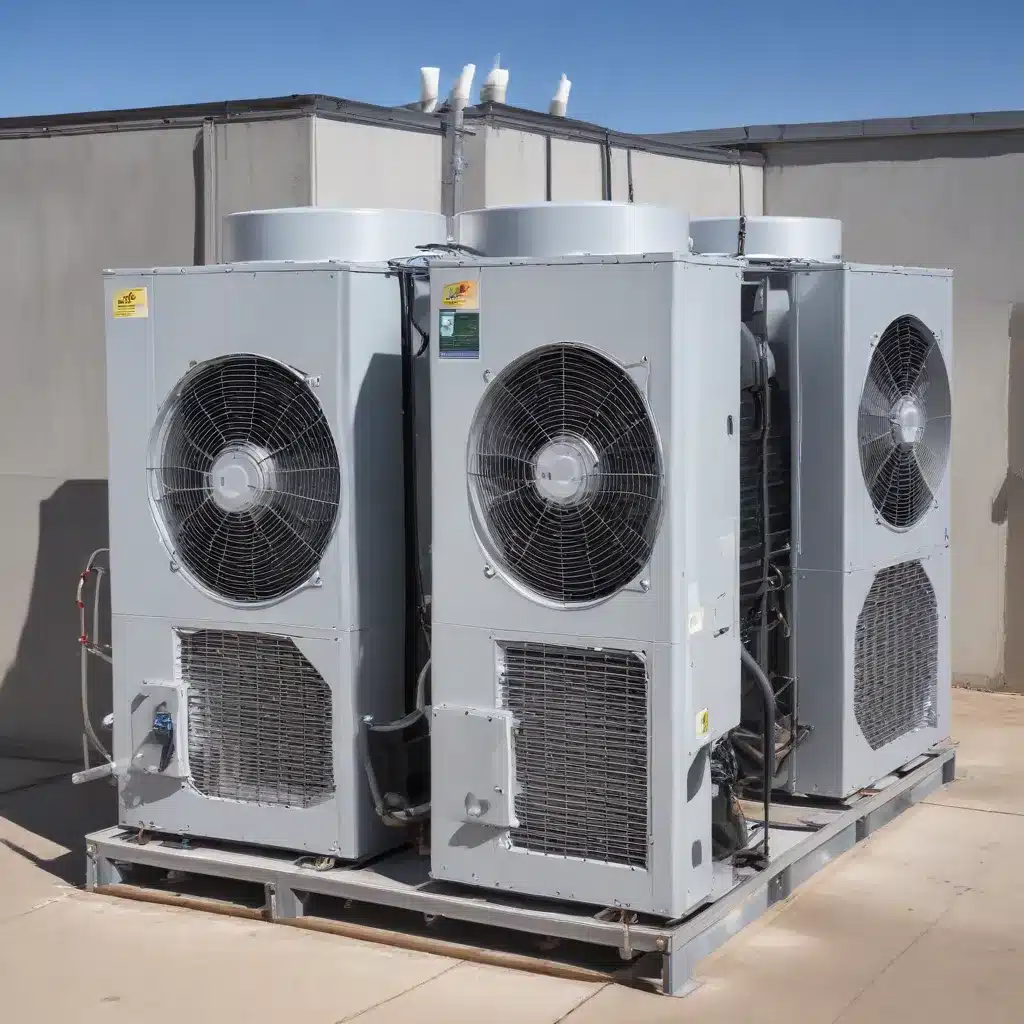
As HVAC and refrigeration specialists, we at Airgas Refrigerants have a deep understanding of the crucial role that refrigerant reclamation plays in promoting sustainable cooling systems. In this comprehensive article, we will explore the principles of evaporative cooling, delve into the strategies for effective refrigerant reclamation, and discuss the optimization techniques that can enhance the efficiency of these systems.
Principles of Evaporative Cooling
Evaporative cooling is a well-established, energy-efficient method of temperature reduction that harnesses the principles of latent heat exchange. By leveraging the phase change from liquid to vapor, evaporative cooling systems can provide a cost-effective and environmentally friendly alternative to traditional vapor-compression refrigeration. This approach is particularly well-suited for arid and semi-arid climates, where the ambient air typically has a low relative humidity.
The core concept involves forcing air to pass over a water-saturated medium, such as a wet pad or a spray of water. As the air flows through the system, the heat from the air is absorbed by the water, causing it to evaporate. This evaporative process results in a significant drop in the air temperature, effectively cooling the space. The efficiency of this system is directly correlated with the ability to effectively manage and reclaim the refrigerant used in the process.
Refrigerant Reclamation Strategies
Responsible refrigerant management is a critical component of sustainable cooling systems. Reclaiming refrigerants, rather than venting them into the atmosphere, plays a crucial role in mitigating the environmental impact of HVAC operations. This approach not only reduces the depletion of the ozone layer but also minimizes the contribution to global warming.
The reclamation process involves the recovery, purification, and reintroduction of refrigerants back into the supply chain. By employing closed-loop recycling, these valuable resources can be repurposed and reused, reducing the need for the production of new refrigerants. This circular economy model aligns with the principles of sustainability and helps to conserve natural resources.
Optimization Techniques
Maximizing the efficiency of evaporative cooling systems is key to achieving optimal performance and minimizing the environmental footprint. Several optimization techniques, grounded in sound engineering principles, can be employed to enhance the overall system efficiency.
Energy Efficient Designs
Incorporating energy-efficient design elements, such as high-performance fans, low-GWP refrigerants, and advanced control systems, can significantly improve the energy consumption of evaporative cooling units. These measures not only reduce operating costs but also contribute to a smaller carbon footprint.
Thermodynamic Considerations
Understanding the underlying pressure-temperature relationships and thermodynamic principles governing the evaporative cooling process is crucial for system optimization. Careful consideration of factors like air flow, humidity levels, and heat transfer mechanisms can lead to the development of more efficient system configurations.
Computational Modeling
The use of advanced computational fluid dynamics (CFD) modeling can provide valuable insights into the complex flow patterns and heat transfer dynamics within evaporative cooling systems. These simulations can aid in the optimization of system designs, ultimately leading to enhanced performance and energy efficiency.
Refrigerant Management
Effective refrigerant management is the cornerstone of a sustainable approach to cooling system operations. This encompasses the entire life cycle of the refrigerants, from recovery and purification to responsible disposal and the introduction of environmentally friendly alternatives.
Recovery and Purification
The recovery of used refrigerants and their subsequent purification through distillation or other processes is a crucial aspect of the reclamation strategy. By ensuring the purity of the reclaimed refrigerant, it can be safely reintroduced into the supply chain, reducing the demand for new refrigerant production.
Regulatory Compliance
Compliance with evolving industry standards and government regulations regarding refrigerant management is essential for maintaining a sustainable cooling ecosystem. Staying abreast of guidelines, such as the Montreal Protocol and the Kigali Amendment, ensures that cooling systems operate within the boundaries of environmental protection.
Environmentally Friendly Alternatives
The adoption of low-GWP and natural refrigerants, such as ammonia, carbon dioxide, and hydrocarbons, can significantly reduce the environmental impact of cooling systems. These alternative refrigerants offer a promising path towards a more sustainable future, as they do not contribute to ozone depletion or have a disproportionately high global warming potential.
Sustainable Approach
Embracing a comprehensive, sustainable approach to cooling system design and operation is essential for mitigating the environmental consequences of refrigerant usage. This holistic perspective encompasses various aspects, including life cycle assessment, waste minimization, and the adoption of circular economy principles.
Life Cycle Assessment
Conducting a thorough life cycle assessment (LCA) of cooling systems can provide valuable insights into the environmental impacts associated with the manufacture, installation, operation, and end-of-life disposal of these systems. This analysis can inform decision-making and guide the implementation of more sustainable practices.
Waste Minimization
Minimizing waste throughout the refrigerant life cycle is a key component of sustainable cooling. This involves optimizing recovery and purification processes, reducing refrigerant leaks, and promoting responsible disposal or reclamation of used refrigerants. By employing best-in-class leak detection methods and recovery cylinder tracking, the overall environmental footprint can be significantly reduced.
Circular Economy Principles
Embracing the principles of the circular economy, where resources are used, reclaimed, and reused to the greatest extent possible, is a fundamental aspect of sustainable cooling. This approach aligns with the Airgas Refrigerants’ commitment to responsible refrigerant supply and the promotion of a more sustainable future for the HVAC and refrigeration industry.
In conclusion, the integration of evaporative cooling techniques, optimized refrigerant reclamation strategies, and a comprehensive sustainable approach is essential for the HVAC and refrigeration industry to minimize its environmental impact. By leveraging the expertise of Airgas Refrigerants, facility managers, HVAC contractors, and environmental compliance officers can work together to implement these strategies and contribute to a greener, more efficient cooling ecosystem.

